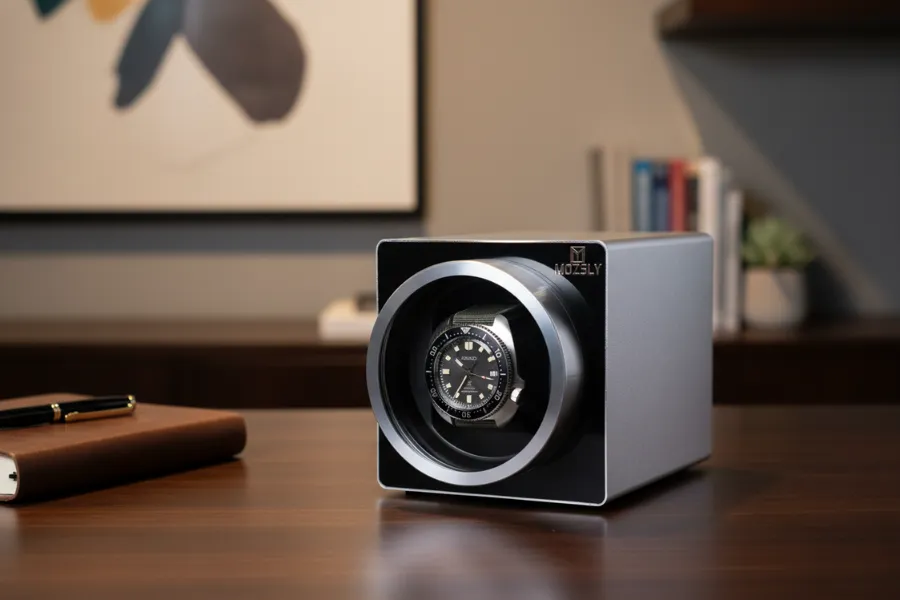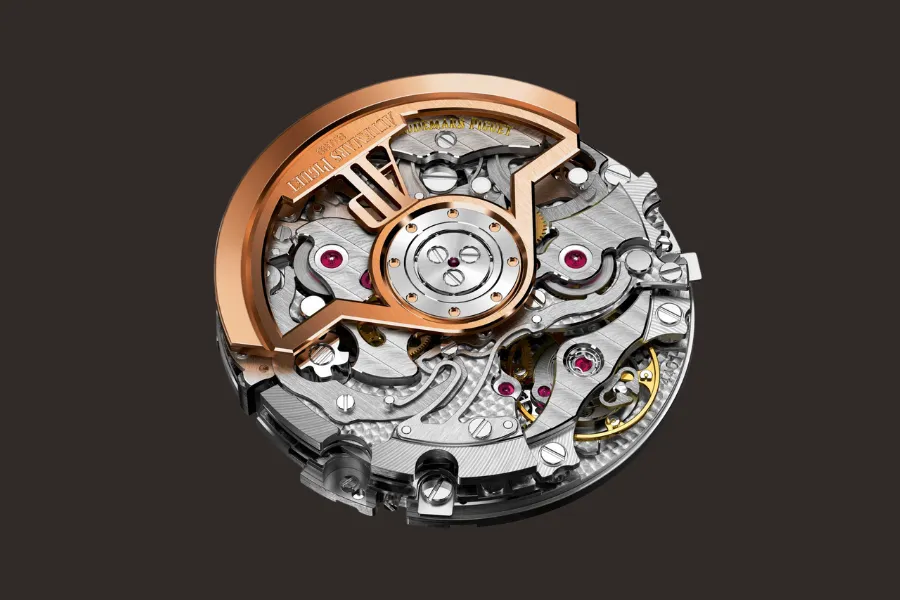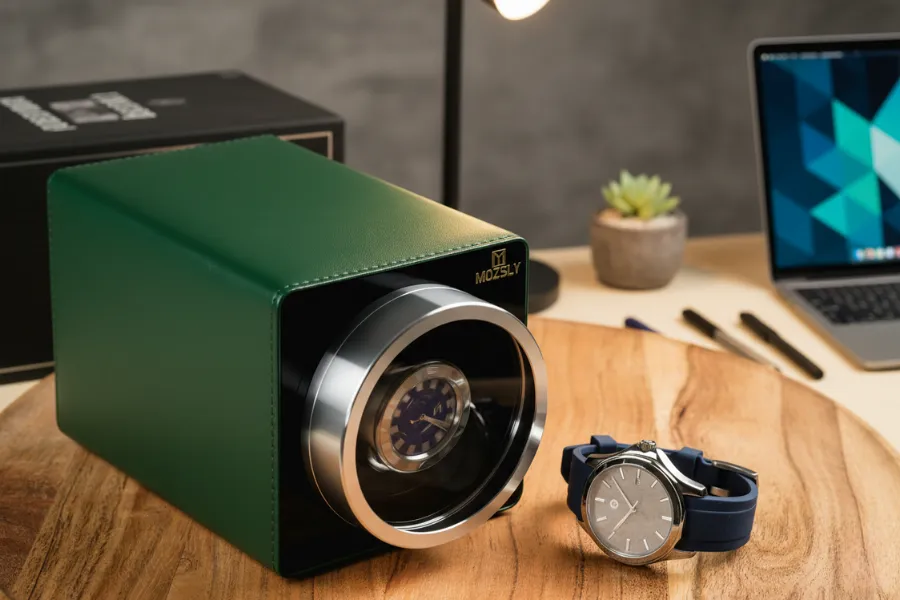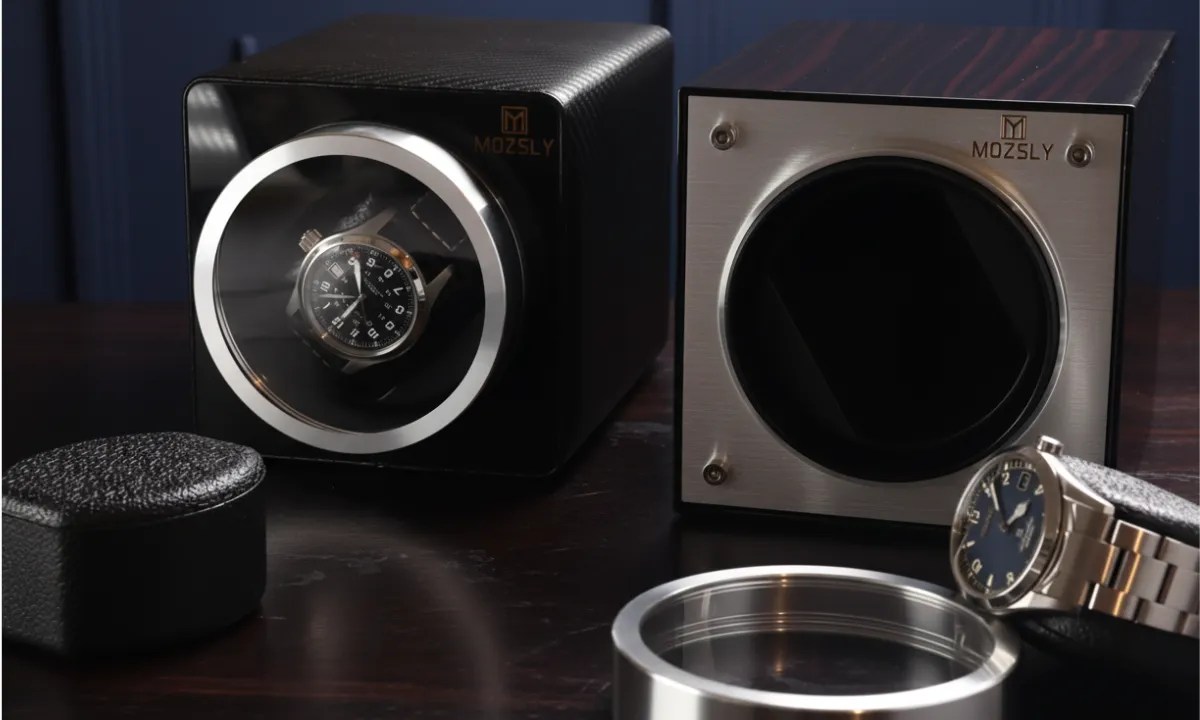Share This Post
I’ve collected mechanical watches for more than a decade, and I still remember the first night I left my Submariner on a watch winder. I stared at the ceiling, half-sure I’d hear a tiny snap as the mainspring exploded. The next morning—nothing. The watch was spot-on, and my local watchmaker (a certified Rolex tech, no less) laughed at my worry.
He explained a simple truth: a proper winder moves in short, smart bursts, not endless circles. That quick chat, plus years of trial and error on my own pieces—from beat-up Seikos to a vintage Speedmaster—taught me to trust the technology. In the next few minutes, I’ll pass on everything I’ve learned, so you can stop losing sleep and start enjoying your watches again.

How Watch Winders Actually Work (The Smart Cycle System)
So, how do watch winders work without wearing out your favorite timepiece? They use a programmed rhythm called TPD—Turns Per Day. Think of TPD like step goals on your fitness tracker. Your watch needs a certain number of “steps” to stay charged, and the winder delivers them in quick sessions with long rests in between.
On my Mozsly watch winder, the standard setting spins for about 3 minutes 28 seconds, rests for 56 minutes 32 seconds, and then repeats. That’s all—no marathon, just short sprints followed by coffee breaks.
Why did engineers build auto watch winders this way?
- They mimic the natural movement of your wrist.
- They let lubricants spread out evenly instead of pooling.
- They avoid the extra wear you’d get from non-stop motion.
Pretty clever for a small box sitting on your dresser, right?
Breaking Down TPD: What 650 Turns Really Mean
Let’s do a little math together. A common spec is 650 TPD.
- 650 turns ÷ 24 hours ≈ 27 turns per hour.
- 27 turns ÷ 60 minutes ≈ 1 turn every 2.2 minutes.
If your winder knocks out 30 turns in a two-minute burst, it can snooze for half an hour and still hit the daily goal. That explains why you catch it moving only now and then. When you see it spinning, you’re watching a quick workout—not a never-ending treadmill session.
Real Watch Winder Rotation Patterns You’ll Observe
Here’s what I see on my Mozsly:
- Clockwise 208 seconds
- Rest 56 minutes 32 seconds
- Counter-clockwise 208 seconds
- Rest again
Then the loop repeats.
Normal sounds? A soft whirr and maybe a gentle click when it starts or stops. Abnormal sounds? Grinding, loud knocking, or constant running. If you hear any of those, hit pause and grab the manual. A high quality watch winder should be the quiet roommate—always there, never annoying.

Why Your Expensive Watch Is Safer With a Watch Winder Than You Think
“Are watch winders bad for fancy watches?” I hear that everywhere. Let’s clear the air.
Automatic movements already protect themselves. A winder simply keeps them in their comfort zone. In fact, using a quality watch winder often means less wear than daily hand-winding because you’re not tugging on the crown and pulling dust or moisture inside the case.
The Over-Winding Myth: Why It’s Impossible
Your automatic watch has a built-in slipping clutch. When the mainspring is fully wound, the clutch slips so the spring can’t tighten any further. Think of twisting a jar lid until it suddenly spins freely—that’s the clutch doing its job. A self winding watch winder turns slowly and never applies more torque than the movement allows. So over-winding? Not going to happen unless the watch itself is faulty.
How Watch Winders Protect Your Investment
- Consistent lubrication – Oils stay spread out instead of pooling.
- Less handling wear – You’re not yanking the crown every morning.
- Calendar accuracy – Complicated date mechanisms don’t stop and need resetting.
- Ready-to-wear convenience – Grab and go when that last-minute invite pops up.
True story: A buddy left his Omega in a drawer for a year. The oils thickened, the movement slowed, and the service bills reached hundreds of dollars. He’s a believer in winders now.

Setting Up Your Watch Winder for Optimal Performance
A winder helps only if you set it right. Let’s tackle that together.
Finding Your Watch’s Perfect TPD Setting
- Start with the brand guide. Rolex likes 650–950 TPD; Seiko prefers 500–950.
- Test for 48 hours. Let the watch run and see how it keeps time.
- Adjust as needed. If it gains or loses more than a few seconds a day, bump TPD up or down by 100.
Troubleshooting quick hits:
- Watch stopped? Raise TPD or check the power switch.
- Running fast? Lower TPD.
- Same error every day? Check direction—some movements prefer clockwise only.
Brand-Specific TPD Quick Reference
| Brand | Recommended TPD |
| Rolex | 650–950 |
| Omega | 650–800 |
| Seiko | 500–950 |
| Tudor | 650–800 |
Most multiple watch winders, including the Mozsly watch winder, offer several TPD modes so suitable for most watches.
Practical Considerations for Daily Watch Winder Use
Beyond rotation, real life matters: energy costs, bedroom noise, and simple upkeep. Let’s be honest about all three.
Power and Noise Reality Check
- Energy use: 3–5 watts. At average U.S. rates, that’s about two bucks a month—cheaper than a latte.
- Noise: 10–20 dB on a good unit—quieter than a whisper. Mine sits on the nightstand, and my dog still snores louder.
- Placement tip: Put the winder on a solid, level surface. A wobbly shelf can amplify vibrations.
Keeping Your Winder Running Smoothly
- Dust the case once a week with a microfiber cloth.
- Wipe the watch pillow with a damp cloth every few months.
- Unplug the winder if you won’t use it for several weeks so the motor can rest.
- Listen. Strange noises often show up before bigger problems.
A high end watch winder motor should last for years. If you ever hear grinding or see jerky movement, contact support. Better a quick fix now than a pricey repair later.
Conclusion
So, do watch winders spin all the time? Still no, and that’s fantastic news. Those timed cycles in a luxury watch winder mimic your wrist, keep oils moving, and shield your movement from unnecessary wear. Trust the slipping clutch inside your watch and the smart program inside the winder.
I’ve relied on the Mozsly watch winder for three straight years, and every watch in my case is ready to go—no dead calendars, no dry gears. Now it’s your turn: pick a quality watch winder, set the correct TPD, give it a quick dust now and then, and enjoy the peace of mind that comes with a watch that’s always alive and ticking the moment you strap it on.
Related Post's
Featured Video
Provide an email subscription feature for users to sign up for updates.
Follow the world of watches and cigars for exclusive content!
By subscribing to our newsletter, you will be the first to receive notifications of our latest articles, popular posts and special events.





